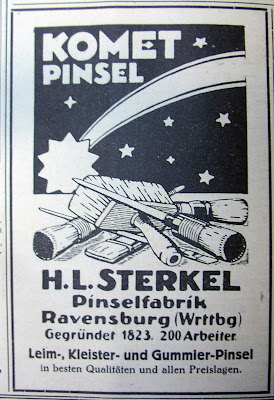 |
| Harry Graf Kessler by Edvard Munch |
In 1913, Kessler founded the Cranach Press in the spirit of the Arts and Crafts movement and inspired by the likes of William Morris, the Doves Press, Cobden Sanderson, and others to publish livre d'artistes. Among those he worked with were Eric Gill, Henry van der Velde, Aristide Maillol and Edward Gordon Craig . It was the latter who illustrated the Cranach Press' Hamlet in 1928. Sarah Werner in her Wynken de Worde blog has a good illustrated description of the Hamlet.
The Herzogin Anna Amalia Bibliothek in Weimar is celebrating the 100th anniversary of the Press and issued a wonderful catalog that provides background information on Kessler, his activities in Weimar, with the remainder given over to the depicting works Kessler published, including job work. The bulk of the illustrations are dedicated to the livre d'artiste however.
Also included in the catalog is a poster depicting the process of creating Hamlet, including layout, preparing the paper, proofing, printing and not enough of the binding process by Otto Dorfner (below). Dorfner was also associated with the Bauhaus in Weimar, was a founding member of Meister der Einbandkunst, but also was on the Nazi's Gottbegnadeten List or artists crucial to the Nazi's culture. He created among other things presentation bindings and objects).
Back to the poster with images of the printing process. Those fortunately are online in the Herzogin Anna Amalia Bibliothek's digital collections. While the poster only has 60 images, the online collection has 96 (still few of the binding process). The collection can be accessed here. Presentation could be better, the images are not really in order of process, and scans from glass plate negatives are interspersed with scans of the envelopes (containing descriptive information). Still a good resource. Navigation (in German only) below. At left, highlighted in the blue panel, Inhalt gives the list of images that will appear at right, Vorschau provides thumbnails of the images. You can also scroll through using the arrows above the images...
| Click to enlarge |
The catalog to the exhibit can be ordered online from Amazon. It's in German only, but has lots of pictures.





















